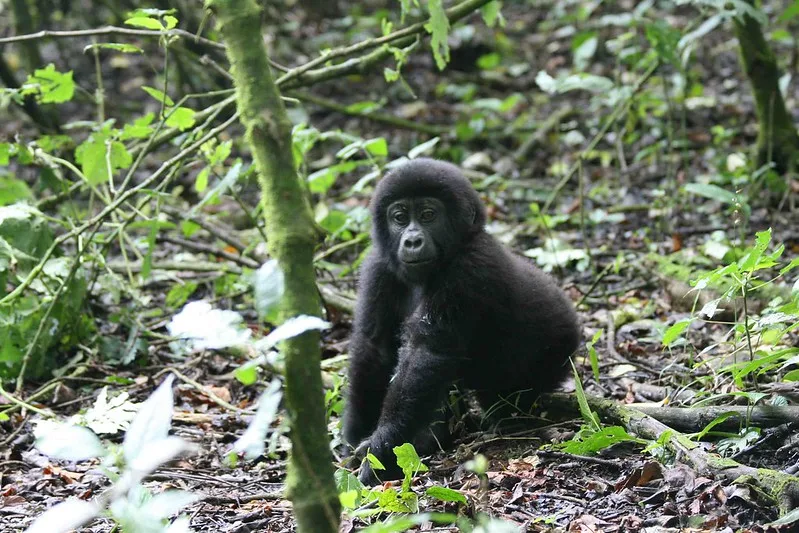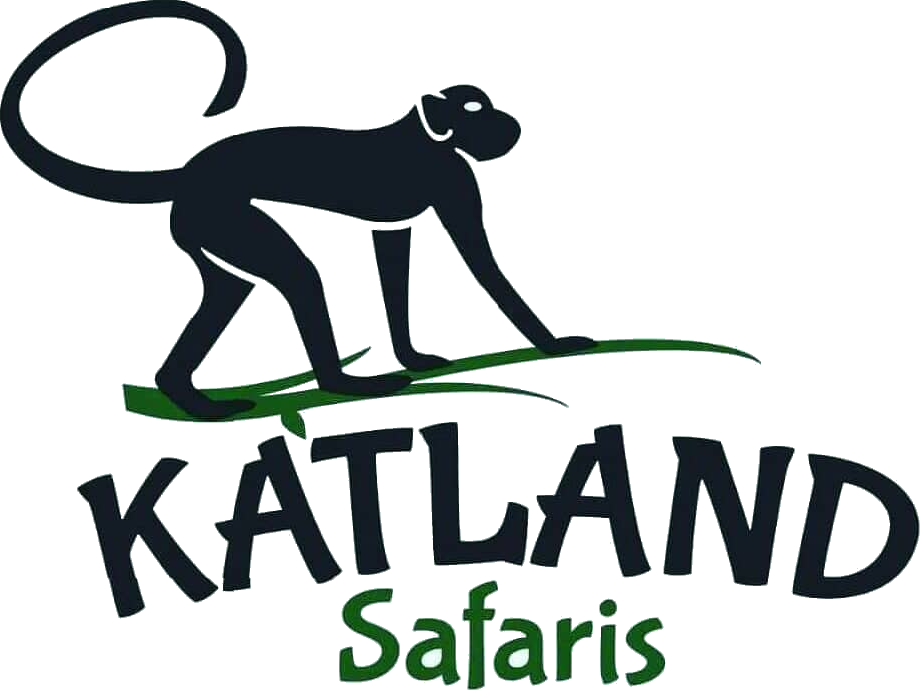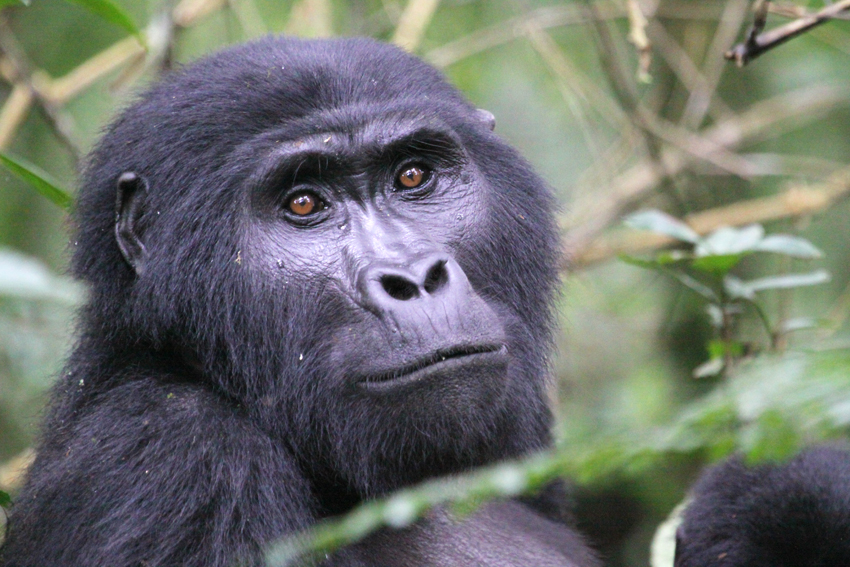My First time in Bwindi National Park.
I was supposed to undertake research and submit a dissertation as I finished my Bachelors in Tourism Management 3004 at Makerere institution, the top institution in Uganda. My study area included Bwindi Impenetrable Forest National Park. This time, the focus was not just on gorilla trekking but also on assessing the impact of Uganda Wildlife Authority projects aimed at Buhoma region development of the local populations.
This theme sought to list the advantages the mountain gorillas’ presence in the local region has for the people. The Uganda Wildlife Authority oversees all park operations; they do make some income, but my main concern was how the nearby population benefits from all of this.
Every year the Uganda Wildlife Authority distributes twenty percent of the earnings from tourist operations in Bwindi Impenetrable National park to the nearby population. Nobody actually keeps an eye on how the local officials use this money.
How I Got Ready For My Research in Bwindi Impenetrable National Park
Naturally, I had to ask the director of the Tourism Department at Makerere University for permission on my theme. I subsequently had a supervisor assigned to help me begin developing my research project.
To make sure I collected what others had done and what was needed to compel or justify my study, I had to spend over two weeks of pre-research looking over the existing literature. I visited Uganda Wildlife Authority library and the main Makerere University library multiple times.
After developing my study proposal, I sent it to my supervisor who then approved it combined with my questionnaires, which I intended to utilize to gather information at Bwindi Impenetrable National Park.
Getting clearance from Uganda Wildlife Authority to conduct study in Bwindi Impenetrable National Park came next. Before research, I had to turn in a copy of my proposal; later on, I was asked to additionally turn in a copy of my dissertation.
I had to bring the letter the chief executive of the Uganda Wildlife Authority sent me to Chief warden at Bwindi Impenetrable National Park. Three weeks were assigned for study; Uganda Wildlife Authority financed my lodging and transportation in Bwindi Impenetrable National Park.
How I Designed My Research Time inside the Bwindi Impenetrable National Park
From Kampala, I set for a trip to Bwindi Impenetrable National Park and had to catch a bus to Kabale. The travel from Kampala to Kabale covers roughly 414km in five to six hours. As I peeped through the glass, the view down the road was hypnotic. Beautiful were the flowing, rich green rivers, massive hills and vast valleys we crossed.
There were no automobiles heading to the Buhoma section of Bwindi National Park, so from Kabale I hopped on a pickup from Butogota trade town and remained for a night. When I requested a Uganda Wildlife Authority Land cruiser for a trip to Buhoma in the morning, they refused. They had come to Butogota. It is around 17 miles from Butogota to Buhoma. From Butogotata to Buhoma, there is no public transportation; so, a visitor must pay a separate cab.
When I first arrived in the Buhoma region, I gazed at the stunning Bwindi Forest canopy rising from the bottom to top of the hill on both sides. After reporting to the head warden, he sent one of his employees to arrange for me lodging at Buhoma Community Rest Camp.
My best experience was gradually playing out. Everything was fresh and pleasant to see because it reminded me of early school years when we would just describe mountains and forests without any evidence of their existence. Knowing that I was living out my past studies made me grin a bit.
Alone in my Banda, I would enjoy the wonderful hymns from singing birds rising from the bush from morning and sunset. I could see the wooded hills here. Even frequent visits from various primates such black and white colobus, red-tailed moneys, vervet monkeys, merely gave me fresh life.
I was only that fortunate man to be in one of the parks worldwide with the sole left over mountain gorillas. That is the reason developing a carrier in tourism became so vital to me. Though I felt like a tourist, I was not.
Having supper at Buhoma Community, I had a Banda all on my own. The management suggested how I may earn money by subleasing some beds to the driver guide who might bring visitors to monitor mountain gorillas. I embraced the concept and stayed with many driving guides who shared their stories with me every night there.
My first night was great; in the morning I had to speak with the warden in charge of community. He put me under the direction of a ranger meant to lead me wherever for study. I then told him what I intended to do, and he was rather helpful as he almost had every information right at hand. It really was unique.
About the Bwindi Impenetrable National Park
According to the ranger handbook, Bwindi Impenetrable National Park began as a forest reserve originally gazette in 1942. It became a National Park in 1992 and was named a World Heritage site in 1994. I discovered that the park covers fissured terrain across 327 square kilometers of twisted flora.
More than 300 tree species in the forest have weathered the test of time; more than 10 primate species, including mountain gorillas, 51 reptiles, more than 350 bird species; the list continues growing and much more. He further clarified that the local connotation of the term Bwindi is impenetrable, and so this double meaning is appropriate for the National Park Bwindi Impenetrable.
Among the best places for birdwatching in Uganda, even all throughout Africa, is Bwindi Impenetrable National Park. Celebrated as one of the top birding locations in Africa, the park has over 350 species including Albertine on the red list of IUCN.
In a day, you may find more than one hundred bird species by exploring the Ruhowicz region in Mubwindi Swamp Among the birds you may find are Western Green Tinkerbird, Mountain and golden Stepped Greenbuls, Rwenzori Batis and white-tailed Crested Fly catcher, collared Apalis, Red-faced Woodland Warbler and others.
My Meeting With The Local Community Out Of Bwindi Impenetrable National Park
The range guide set up meetings with numerous villages, therefore facilitating my data collecting process.
I rested in Banda for one week then two weeks gathering data.
I got an opportunity to visit the Buhoma villages walk to examine how the route looked because I was lodging at Buhoma Community. I had to walk the locally supervised Buhoma Community and cultural performance walk. They act and do particular local dances to highlight their culture.
Along with so much more, you may visit a traditional healer, check out the banana beer brewer, see traditional dancers on this trip. The community uses this reasonably priced charge to cover essential needs for their families such sugar, salt, matchboxes, and others.
We accompanied Volcanoes Safari customers who were asking me what I was doing, and I had my first encounter with visitors that I rather well recall. They were rather intrigued in what I was doing as I was a research student in university.
They would ask me every time they needed something known. One fascinating inquiry arose when we came across a coffee plant: what was it? When I informed them this was coffee, they asked if Uganda was among the nations growing coffee. If so, why had they not located it in any other market abroad?
By then Uganda was the fourth biggest exporter of coffee worldwide, and I told them other nations would process raw coffee without value added and then label it appropriately. Surprised, they handed me my first USD10.00 tip when we got back—my first dollar note in life. As a student, I had landed a goldmine on studies.
The sensation I experienced had to be the same one porters experience when hired guests assist in carrying luggage while gorilla trekking. During gorilla trekking safaris, this is one of the ways one may directly help the surrounding community. The residents pay a little cost for your gear bags, which they use to carter for family events such school fees, clothing, medical attention, and much more.
One of the top medical institutions in this region, Bwindi Hospital receives some funding from the 20% yearly gift from Uganda Wildlife Authority. Some visitors do also give to this admirable cause, therefore enabling the residents to get subsidized medical treatment.
Some of what I discovered about Bwindi Impenetrable National Park After that
I learned during my time in Bwindi Impenetrable National Park that several of the Uganda Wildlife Authority employees by then lacked formal education. Some of them felt I had come to steal their employment, so they never wanted to hang around with me; however, once they understood I was only a student on research, they were OK with me.
Even in cases where formal education level fell short of expectations, most people found it difficult to remember pack facts by memory. Loving their job and ready to fiercely defend it, they were committed men and women. They were a passionate team prepared to grow should opportunity present itself.
I also came to see that many young females had swarmed Buhoma region to work as prostitutes in order to earn fast money and this was rather risky because to tourists and driving guides. I also saw that the area’s increasing tourism was driving businesses to benefit from the sprouting up of artisan markets and stores.
It was an unusual place, high in height and somewhat chilly. Little shine would pass through which makes the region nearly entirely damp, and it might rain without notice at any moment.
Over time, many lodging options ranging from luxury to mid-range to inexpensive are cropping up in the Buhoma region.
Among the lodges in the Buhoma region north of Bwindi Impenetrable National park are Buhoma Lodge, Engage Lodge, Gorilla Forest Lodge, Mahogany springs, Gorilla Resort, Lake Kitandara Tented Camp, Buhoma community Banda, Silver Back Lodge and others.
You now have to take into account the region where your gorilla permit is booked while booking lodging in Bwindi Impenetrable National park. The four sections of Bwindi Impenetrable National Park are Whereas Nkuringo area and Rushaga area is in the southern portion of Bwindi impenetrable National park, Buhoma area and Ruhijah area in the northern portion.
Daily flights from Entebbe Airport or Kajjansi airstrip to Kihihi Air Strip are helping to improve transportation to the Buhoma region. Since there are no taxi services easily available at Kihihi airfield, visitors must book a transfer car in advance. About two hours separate the travel from Kihihi Airstrip to Buhoma.
I pledged to go back frequently and carried many memories when I got back to Kampala.
My conclusion was that, in whichever form you look at it, Bwindi Impenetrable National Park is among the top sites to visit in Uganda. Since then, Uganda Wildlife Authority has embraced my study results; so, I am happy that they are helping the nearby villages grow.


